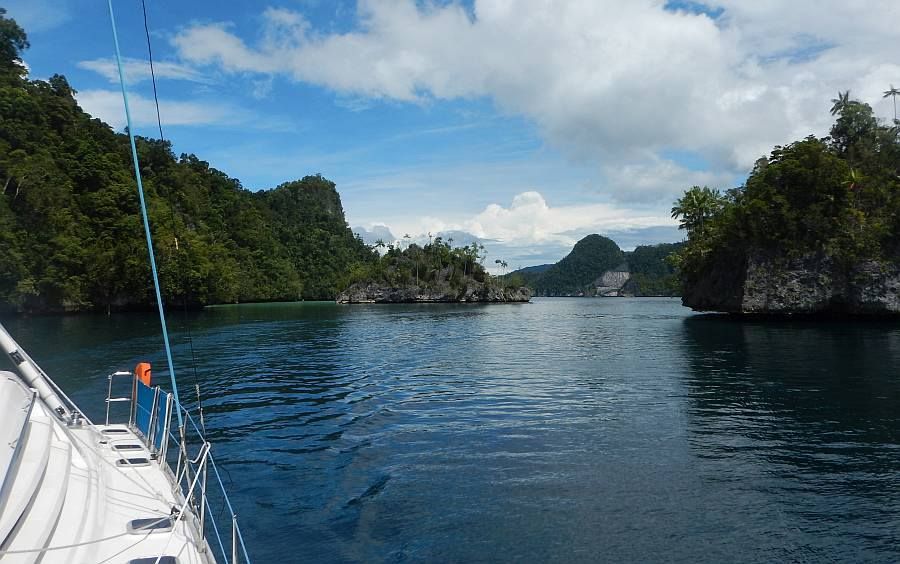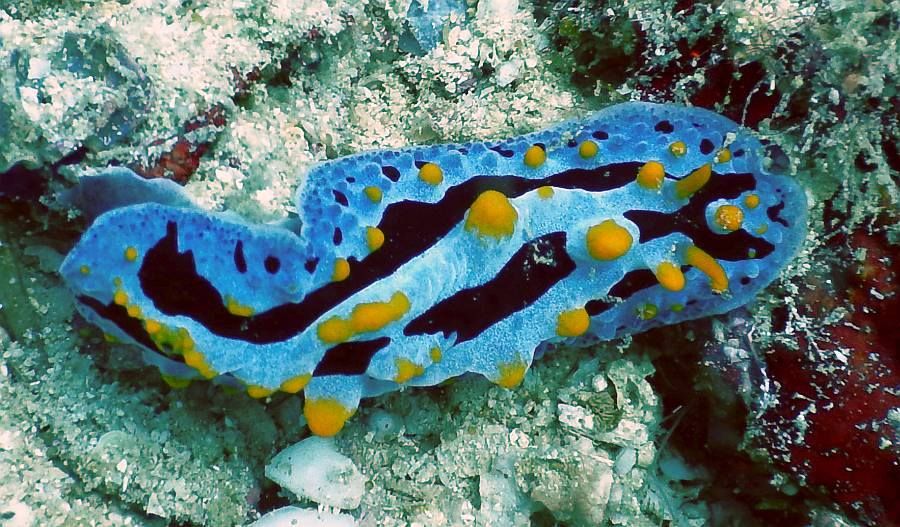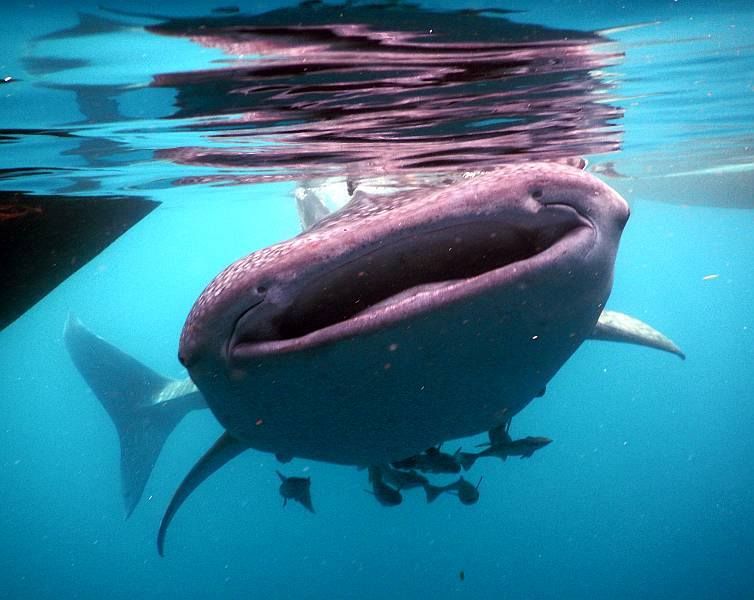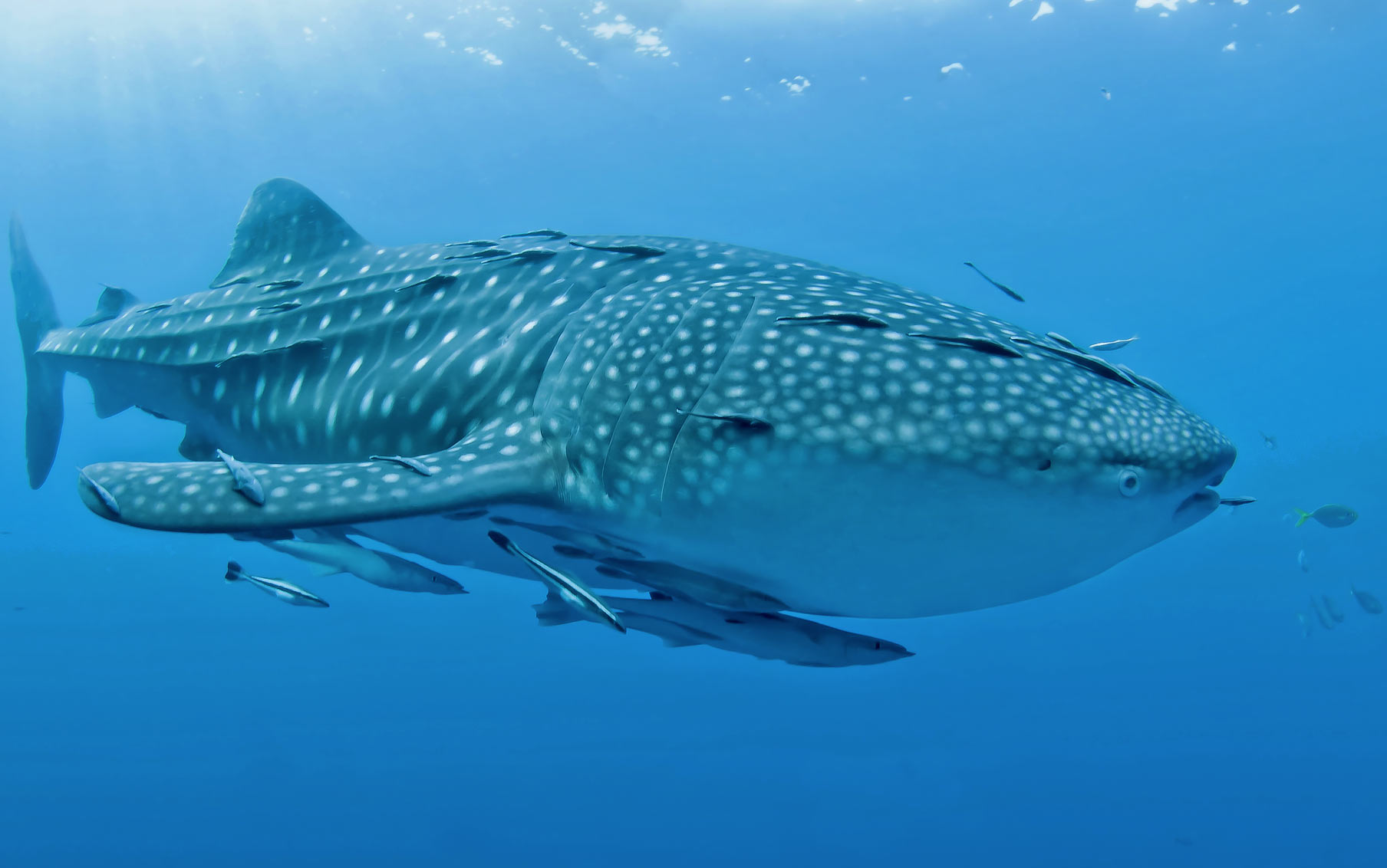With sincere thanks to Sue Hacking and family aboard the S/V Ocelot, we are pleased to include this new guide for cruising in Indonesia.
A chorus of pigeons, hornbills and cockatoos has awakened us in the Triton Bay Divers cove. Cool mist hangs low over the mainland mountains. Donning our swim gear for a morning dive, we’re pleased to see blue sky over the strait. It will be a bright day underwater.

South of Indonesia’s Raja Ampat and east of the famous Spice Islands of Ambon and Banda, lies a newly “discovered” cruising ground: Kaimana Regency and, specifically, Triton Bay.
Encompassing some 90 Nm north to south and numerous coves and offshore islands, this coast of Papua is home to the best of tropical marine life: from giant whale sharks to tiny pygmy seahorses.
Papua is one of Indonesia’s least populated areas, and many a day passes with only a lone dugout canoe or small inter-island freighter chugging along the straits. The only resort in the region is the newly opened Triton Bay Divers, located on Iris Strait, about 30nm south of Kaimana. Owners Leeza English and Jimmy Thai welcome visiting yachts and look forward to sharing their knowledge of the area.
Kaimana and Triton Bay are formed inside towering limestone cliffs up to 3,000 feet high, bedecked in lush green, often pristine forest. Bird song echoes from shore to shore; overhead, one can spot sea eagles, parrots and frigate birds. The sound of a feathery deep thrumming marks the passage of the black, white and brown Blyth’s hornbill.
Local custom has banned reef bombing, and the villagers are ardent in keeping non-Papuan fishing vessels from entering the waters. It was here, just nine years ago, that marine biologists from Papua and Australia observed more than 330 fish species in one dive site, breaking the record set previously from a dive in Raja Ampat. They also discovered more than 20 species of marine life never seen before.

This is truly a cradle of life
More than 30 named dive sites lie within the Triton Bay area, and exploration of this intricate coastline continues. Strong currents feed colorful soft corals along the entrances to the straits, and backwater coves harbor the macro-life that many divers seek: brilliant nudibranchs and carefully camouflaged pygmy seahorses.
Visibility varies from 30 feet to more than 100 feet (10-30m) but each dive brings new creatures to light. You can swim with turtles, be surrounded by schools of unicorn fish and snappers, and marvel at the huge groupers and sweetlips that lurk behind pink and purple sea fans.
In the open bays, huge fishing platforms called “bagans” anchor out for nightly net fishing. They are 80-foot (25m) trimarans with two stubby masts festooned with ropes to hold up the many bits of wood that go out to the bamboo floats 20 feet (6m) on each side of the main hull.
With a small house on deck for the crew and a small generator, these craft anchor and work at night, lowering nets under each wing-deck and attracting fish with lights on deck. At intervals throughout the night, the nets are raised, the fish removed, and the nets lowered again.
Obviously, some fish escape and the whale sharks have worked this out. The best time to swim with these gentle giants is at dawn during the dark of the moon, when they are more likely attracted to the lights of the bagans. There is no need to arrange a visit beforehand; just dinghy over and ask for “ikan besar”, literally “fish big”, and you’ll be met with shaking heads or bright smiles and pointing.

If a huge gray-and-white spotted body appears beneath your tender, slip in and swim with the world’s largest fish. The fishermen will feed the whale shark handfuls of bait fish to keep the whale shark circling back for more.
Mid-afternoon sun burns hot on this coast of Papua, but the rays are welcome after a morning spent in the sea. Today’s highlights were two 5-foot tasseled wobbegong sharks, fields of orange soft corals, and the spotting of two new nudibranchs. We wave to a passing longboat that has come to the cove for fresh water from the spring.
Tomorrow we sail for Tual in the southern Malukus, re-entering the hubbub of southern Indonesia. But Papuan smiles, bird song, the fragrance of jasmine on the night air, and the quiet of jungle-clad mountains over pristine coral reefs will beckon our return.
Sue Hacking is a writer based on her 48-foot catamaran Ocelot. She has been sailing the world with her husband and children since December 2001. They have spent the past eight years cruising Indonesia and Southeast Asia. To read more about their travels, visit hackingfamily.com.
Cruising Information
Access by air
Wings Air (a subsidiary of Lion Air) has daily flights into Kaimana from neighboring Ambon, which is served daily from Jakarta.
Facilities in Kaimana
A small grocery store, Senja Mart, has staples but no dairy products except powdered milk.
The town’s main market (pasar) is a bustling array of stalls where you can find cucumbers, eggplant, tomatoes, avocados, various greens, cabbages, shallots, potatoes, bananas, the occasional pineapple, some papaya and pumpkin.
Across the road lies the buzzing fresh fish market.
Minibus “bemos” ply the streets, going from town to the market (10 minutes, 50 cents) and to the airport (25 minutes, $1.50).
Officialdom
Kaimana is not a port of clearance for Indonesia, so all paperwork must be in order before arriving. A quick visit to the English-speaking Harbor Master is in order, as well as a courtesy visit to customs, all on the waterfront near the container docks. There is no good dinghy tie-up location so it’s best to drop folks ashore in front of the golden-spired mosque on the beach/sea wall and have them call for a pickup.
All visitors to Kaimana are required to buy a $50 Conservation Pin, valid for one calendar year, which helps support the local villages. At the police station, foreigners must register and receive a “surat jalan”, a travel pass, granting the right to visit the regency. Boats arriving from the south may be able to make arrangements for the pins through Triton Bay Divers.
Best time to go
Triton Bay is at its best from November through April when the days are normally clear, winds are light, and the evenings are cool and often bug-free. May-September brings strong southeast trades from the Pacific, so the live-aboard dive boats all return to Bali, and Triton Bay Divers resort closes.
Paying for the shark experience
The value of bait fish thrown in during a half-an-hour swim amounts to about $5 (50,000 rupiah), and Leeza of Triton Bay Divers (TritonBayDivers.com) asks that payment be made with goods, not cash. The men appreciate bags of sugar, noodles, instant coffee and cigarettes. Spare clothing, rain gear or spare lines would also be welcomed.
Anchorages
Many can be found on GoodAnchorage.com, including all those used by S/V Ocelot on this visit.
Navigation
This coast of Papua is so remote that charts have not been updated and are inaccurate. On Ocelot, we use Google Earth-generated KAP file overlays. Capt. Jon has published an article on how to create accurate geo-referenced KAP files at http://wwww.svocelot.com/Cruise_Info/Equipment/KAPFiles.htm
Further Information:
Visit the Hacking Family’s website and S/V Ocelot’s Facebook page for more updates and information. Happy Sailing!
Footnote:
Contact Seal Superyachts Indonesia for detailed information about cruising around Indonesia, superyacht charter regulations and about how we can support your visit.
Principle agent Andy Shorten is proud to have worked with many of the World’s largest Superyachts and has extensive knowledge of Indonesia and the surrounding area.
Andy Shorten
Phone: +62 81 338 732 764
Email: info@thelighthouseconsultancy.com
